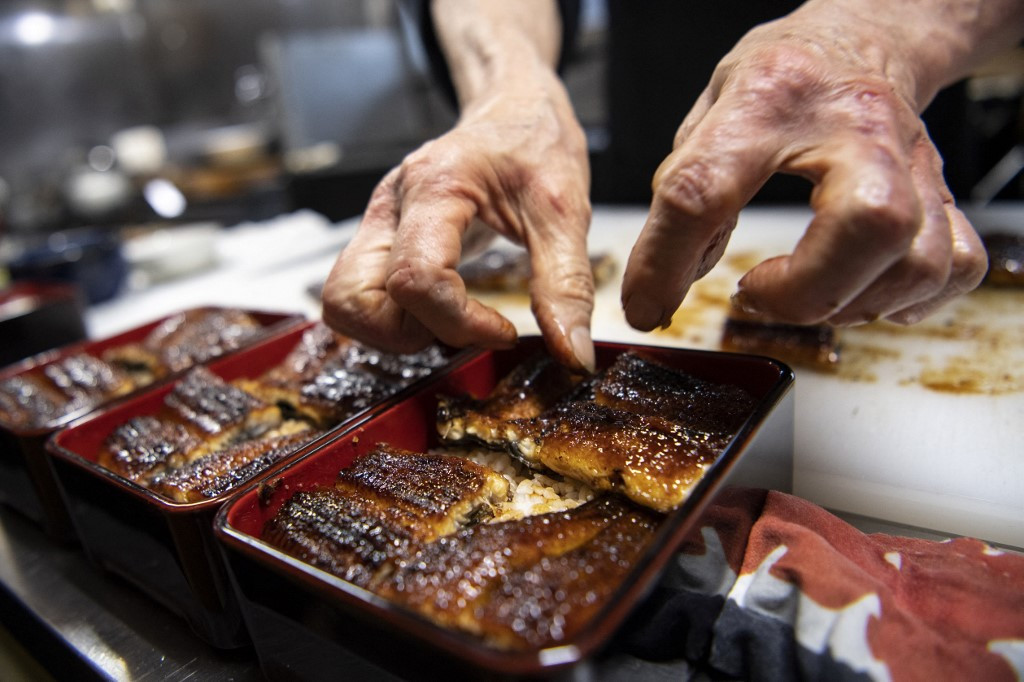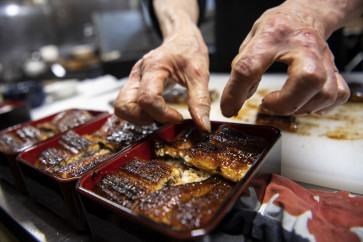Popular Reads
Top Results
Can't find what you're looking for?
View all search resultsPopular Reads
Top Results
Can't find what you're looking for?
View all search resultsAdored and endangered: the complex world of the Japanese eel
Consumed worldwide, eel is particularly popular in Asia, and perhaps nowhere more so than Japan, where it has been eaten on the archipelago for thousands of years.
Change text size
Gift Premium Articles
to Anyone
T
suyoshi Hachisuka gently places skewered eel on a grill, preparing a much-loved Japanese delicacy that is now so endangered it commands eyewatering prices and the attention of international traffickers.
Consumed worldwide, eel is particularly popular in Asia, and perhaps nowhere more so than Japan, where remains found in tombs show it has been eaten on the archipelago for thousands of years.
Despite its enduring popularity, much about the eel remains a mystery. Precisely how it reproduces is unclear, and coaxing it to do so in captivity without intervention has proved unsuccessful so far.
Pressures on wild stocks ranging from pollution to overfishing mean supplies have dwindled dramatically in recent decades.
While the writhing snake-like creature is repellent to some, it is a mainstay of Japanese cuisine, and since the 17th century has most often been prepared "kabayaki"-style: skewered, grilled and basted in a mixture of soy sauce and mirin rice wine.
In central Japan's Shizuoka, 66-year-old Hachisuka's restaurant in Hamamatsu city has used the same basting sauce base for four decades.
"I adjust it as I go. It mustn't be too sweet or too salty," he told AFP.



















